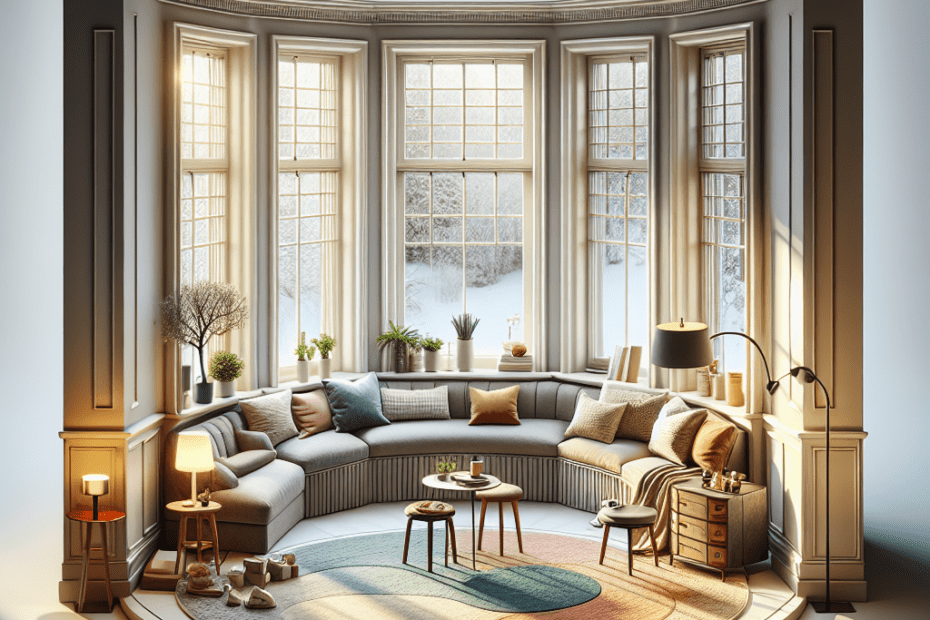Understanding Bay Window Furniture Layout
Bay windows are a beautiful architectural feature found in many homes. They add elegance and charm by extending beyond the main walls, offering a panoramic view of the outside. However, they can pose a unique challenge when arranging furniture. The goal is often to enhance both functionality and aesthetics while maximizing natural light. For homeowners looking to adjust their bay window furniture layout effectively, strategic planning is key.
The Appeal of Bay Windows
Bay windows not only improve the visual appeal of a room but also increase the overall square footage by creating a nook perfect for various purposes. According to data from the National Association of Home Builders, homes with bay windows sell 4% more frequently than those without, highlighting their desirability.
Strategies for Effective Bay Window Furniture Layout
Ensuring the layout aligns with the room’s functionality while taking advantage of the bay window’s features can be challenging. They recommend the following strategies:
- Utilize Multi-Functional Furniture: Opt for pieces that can be adapted for multiple uses, such as a window seat with built-in storage. This approach not only saves space but also harnesses the cozy nook offered by the bay window.
- Create a Cozy Reading Nook: Placing a comfortable armchair with a small side table in the bay window area can transform it into a perfect reading nook.
- Highlight the View: When arranging furniture, make sure not to block the window. Low-backed sofas or translucent window treatments can preserve the view while maintaining privacy.
Different Room Styles
| Room Style | Furniture Placement Options |
|---|---|
| Living Room | Arrange a sofa parallel to the bay window, with armchairs flanking for symmetry. |
| Bedroom | A daybed fits perfectly within a bay window space, offering both function and beauty. |
| Dining Room | A round table centered in the bay window area maximizes space and encourages socializing. |
Maximizing Natural Light
Bay windows are celebrated for bringing in ample natural light. Ensuring this light is not obstructed is essential for a successful furniture layout:
- Opt for Sheer Curtains: Light, breezy fabrics allow natural light to fill the room while still offering some privacy.
- Reflective Surfaces: Mirrors and glass-topped tables placed strategically can help to disperse sunlight throughout the room.
Personalizing the Space
Decorative elements are a powerful way to express individuality in any space. They recommend incorporating personal touches to make the bay window area special:
- Cushions and Throws: Textiles in varying colors and patterns can add warmth and personality.
- Plants and Greenery: These work especially well in bay windows due to the ample light, adding life and an organic touch.
- Art and Accessories: Artistic elements like sculptures, vases, or framed pictures can bring the entire space together elegantly.
Key Takeaways
- Bay windows enhance a home’s value and appeal.
- Strategic furniture placement can maximize both space and natural light.
- Personalizing the space adds warmth and uniqueness.
Frequently Asked Questions
- How far should the sofa be placed from a bay window?
Ideally, the sofa should be at least two to three feet away to ensure ample space without blocking light.
- Can heavy drapes be used with bay windows?
While possible, it’s recommended to use lighter fabrics that allow natural light to penetrate.
- What color schemes work best with bay windows?
Light and neutral colors often complement bay windows by enhancing the sense of space and brightness.
- Is it advisable to place a TV in front of a bay window?
It’s best avoided as the natural light can cause glare, interfering with viewing comfort.
- What’s the best choice for a bay window in a small room?
A window seat with storage can optimize functionality while maintaining an open feel.
